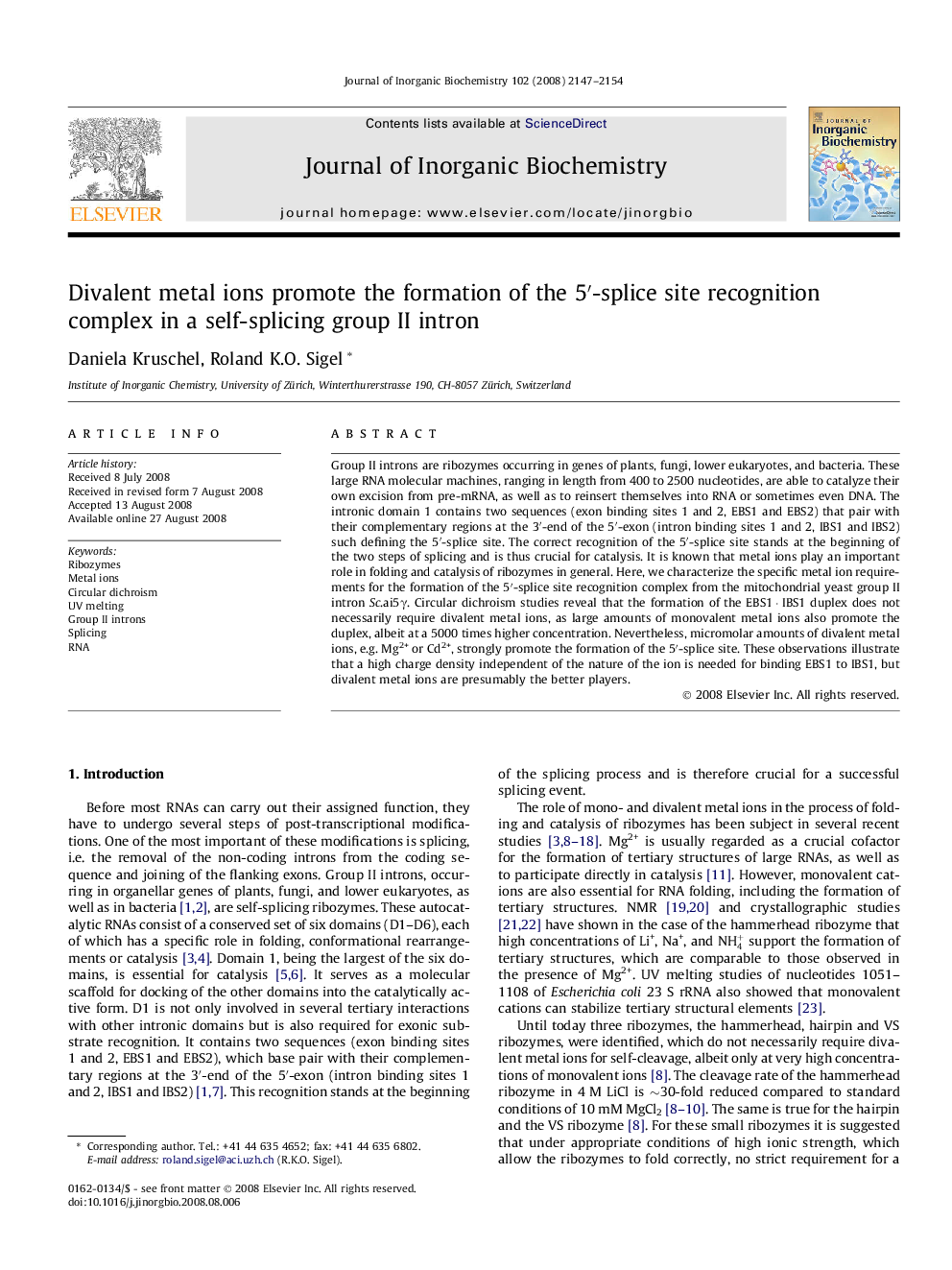| کد مقاله | کد نشریه | سال انتشار | مقاله انگلیسی | نسخه تمام متن |
|---|---|---|---|---|
| 1317543 | 976541 | 2008 | 8 صفحه PDF | دانلود رایگان |

Group II introns are ribozymes occurring in genes of plants, fungi, lower eukaryotes, and bacteria. These large RNA molecular machines, ranging in length from 400 to 2500 nucleotides, are able to catalyze their own excision from pre-mRNA, as well as to reinsert themselves into RNA or sometimes even DNA. The intronic domain 1 contains two sequences (exon binding sites 1 and 2, EBS1 and EBS2) that pair with their complementary regions at the 3′-end of the 5′-exon (intron binding sites 1 and 2, IBS1 and IBS2) such defining the 5′-splice site. The correct recognition of the 5′-splice site stands at the beginning of the two steps of splicing and is thus crucial for catalysis. It is known that metal ions play an important role in folding and catalysis of ribozymes in general. Here, we characterize the specific metal ion requirements for the formation of the 5′-splice site recognition complex from the mitochondrial yeast group II intron Sc.ai5γ. Circular dichroism studies reveal that the formation of the EBS1 · IBS1 duplex does not necessarily require divalent metal ions, as large amounts of monovalent metal ions also promote the duplex, albeit at a 5000 times higher concentration. Nevertheless, micromolar amounts of divalent metal ions, e.g. Mg2+ or Cd2+, strongly promote the formation of the 5′-splice site. These observations illustrate that a high charge density independent of the nature of the ion is needed for binding EBS1 to IBS1, but divalent metal ions are presumably the better players.
Journal: Journal of Inorganic Biochemistry - Volume 102, Issue 12, December 2008, Pages 2147–2154